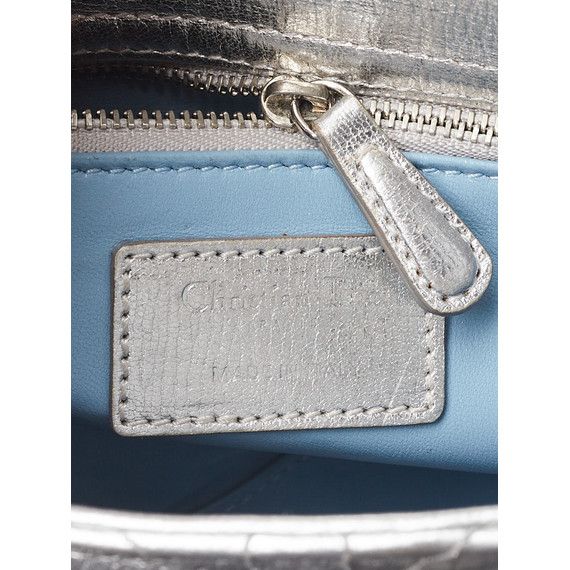Dior has been creating iconic products since it was first established in 1946. And while their coveted handbags have been on every fashion editor’s list for decades, Dior is also known for their clothing, shoes, jewelry, and accessories, but today we're going to focus on authenticating Dior's most-wanted bags like the Lady Dior and the Saddle Bag.

BRIEF HISTORY OF DIOR
“Individuality will always be one of the conditions of real elegance.” - Christian Dior
Christian Dior, who was known for his simplistically elegant designs, founded his storied French fashion house in 1946 at 30 Avenue Montaigne in Paris. Prior to launching his namesake brand, Dior worked alongside Pierre Balmain at Lucien Lelong where they designed dresses for the wives of military officers and French collaborators. Dior’s designs were more voluptuous and body-hugging than the boxy, conservative shapes of World War II styles…which was said to be due to a lack of fabrics. He became an expert at creating feminine shapes and silhouettes for any woman of any size.
DIOR’S INVESTMENT BAGS

DIOR’S LEATHER TAG

One of the first and most obvious ways to judge whether your bag is the real deal is by checking the label and logo. Dior bags have a leather tag which includes a heat stamp, and it should be rectangular shaped and rounded corners. Older bags (before the 90s) feature one stitch on the top of the tag while newer ones are stitched all the way around.
On the front side of the tag, you’ll find the logo heat stamp which should be somewhere between two and three lines. On the tag you’ll find “Christian Dior” with “PARIS” and for some bags you’ll also find “MADE IN ITALY” or “MADE IN SPAIN” in caps, or sometimes can be found on the backside of the tag above the date code. The stamp should be in the center of the tag and lettering should either be in gold, silver, or stamped without a color.
DIOR’S STITCHING

Another telltale sign is the stitching and if it’s crooked, uneven or irregular, you may have a fake Dior bag on your hands because counterfeiters can’t copy Dior's impeccable stitching. A few things to take note of include the color of the stitches (a real bag’s stitches always match the exact color of the leather and lining). Then check out the pattern of the stitched cannage quilting since it’s pretty difficult to replicate. Also on the knockoffs, the threads are deeply embossed into the leather, while on a real bag the artisans would never ruin the bag’s leather with deep stitching.
DIOR’S HANDLES

The handles are another place where it’s easier to spot a fake. if you’re dealing with a bag like the Lady Dior, be sure to take note of the stiffness of the bag’s handles. They should be upright and rigid. Also, check the stitching on the handles to look for signs that were pointed out above. The fakes normally have wider and thicker handles.
THE ZIPPER

Zippers are another place to check for authenticity, and the way they open and close should give you lots of clues about the authenticity. Dior also uses a jewelry-like oval zipper put at the beginning of each zipper. These pulls have the CD letters etched onto it. For other bags like the Saddle Bag, there’s a leather pull with Christian Dior stamped on both sides.
THE HARDWARE

All the hardware on an authentic Dior bag is made of the highest quality materials and should be solid and heavy. The hardware on real bags is never shiny but look a little matte which gives it a vintage look and feel. Also check out the logo etched on various bags. For items like the Saddle Bag, it’s just the CD, but on larger bags, Christian Dior is etched into the hardware. Other pieces of hardware to pay attention to are the charms, which consist of four letters that form the word Dior and an oval leather tag that’s bigger than the “O”.
DATE CODE

You’ll find the date code located inside the bag when you flip up the tag stitched at the zipper. Since Dior is also owned by LVMH, the format is the same as a Louis Vuitton item which is two numbers, two letters, and four numbers (00-XY-0000).
On older bags, the order may be different, separated by a space, and include two letters and four numbers.
On the date code, the last four digits represent the month and year when the bag was made. The first and third number indicates the month of manufacturing. The letters indicate where the item was made.
The first bags didn’t have a date code, but only had “MADE IN ITALY” printed on the reverse side of the tag.
Content and images for this blog post have been referenced from LePrix.